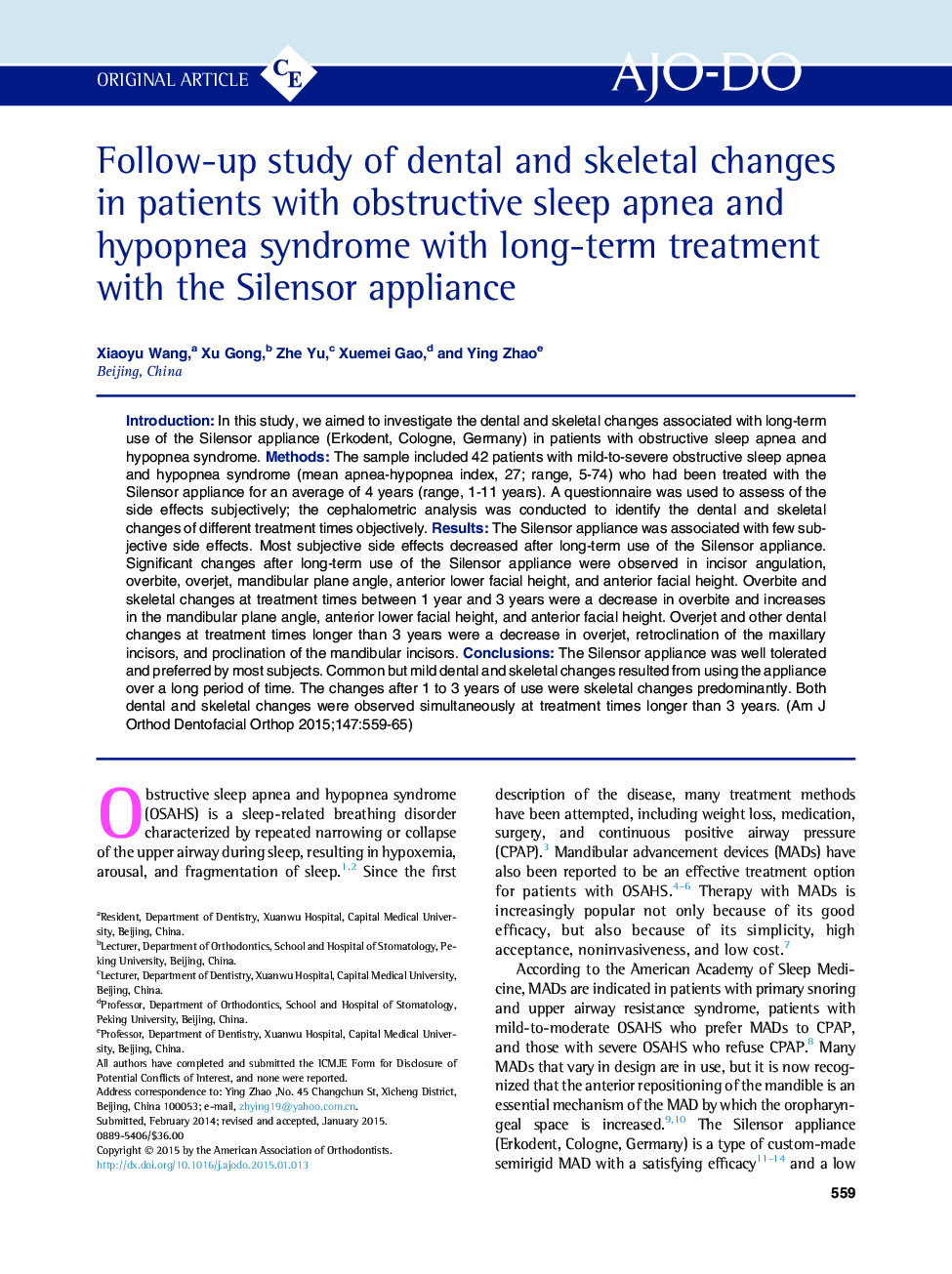| Article ID | Journal | Published Year | Pages | File Type |
|---|---|---|---|---|
| 3115537 | American Journal of Orthodontics and Dentofacial Orthopedics | 2015 | 7 Pages |
•The Silensor appliance was well tolerated and preferred by most subjects.•The side effects were relieved with an extension of treatment time.•The Silensor produced maxillary incisor retroclination and mandibular incisor proclination.•Skeletal changes tended to occur in the short term after treatment.•Dental changes tended to occur with an extension of treatment time.
IntroductionIn this study, we aimed to investigate the dental and skeletal changes associated with long-term use of the Silensor appliance (Erkodent, Cologne, Germany) in patients with obstructive sleep apnea and hypopnea syndrome.MethodsThe sample included 42 patients with mild-to-severe obstructive sleep apnea and hypopnea syndrome (mean apnea-hypopnea index, 27; range, 5-74) who had been treated with the Silensor appliance for an average of 4 years (range, 1-11 years). A questionnaire was used to assess of the side effects subjectively; the cephalometric analysis was conducted to identify the dental and skeletal changes of different treatment times objectively.ResultsThe Silensor appliance was associated with few subjective side effects. Most subjective side effects decreased after long-term use of the Silensor appliance. Significant changes after long-term use of the Silensor appliance were observed in incisor angulation, overbite, overjet, mandibular plane angle, anterior lower facial height, and anterior facial height. Overbite and skeletal changes at treatment times between 1 year and 3 years were a decrease in overbite and increases in the mandibular plane angle, anterior lower facial height, and anterior facial height. Overjet and other dental changes at treatment times longer than 3 years were a decrease in overjet, retroclination of the maxillary incisors, and proclination of the mandibular incisors.ConclusionsThe Silensor appliance was well tolerated and preferred by most subjects. Common but mild dental and skeletal changes resulted from using the appliance over a long period of time. The changes after 1 to 3 years of use were skeletal changes predominantly. Both dental and skeletal changes were observed simultaneously at treatment times longer than 3 years.
